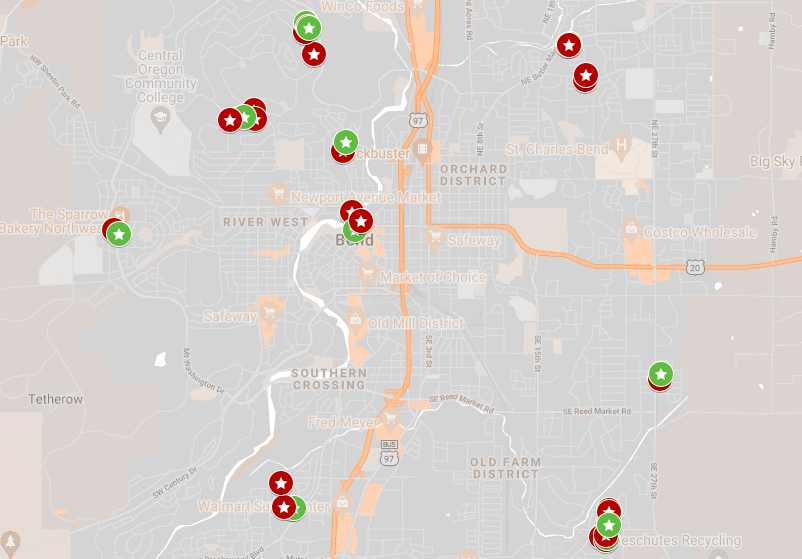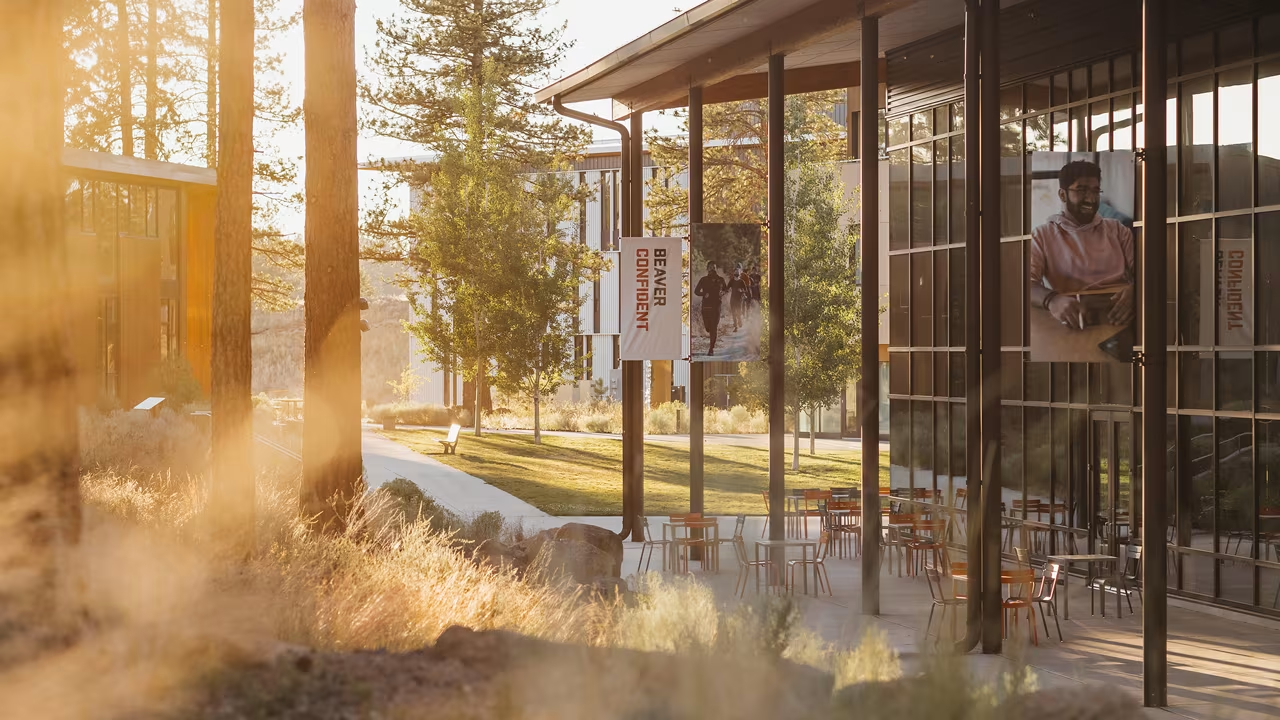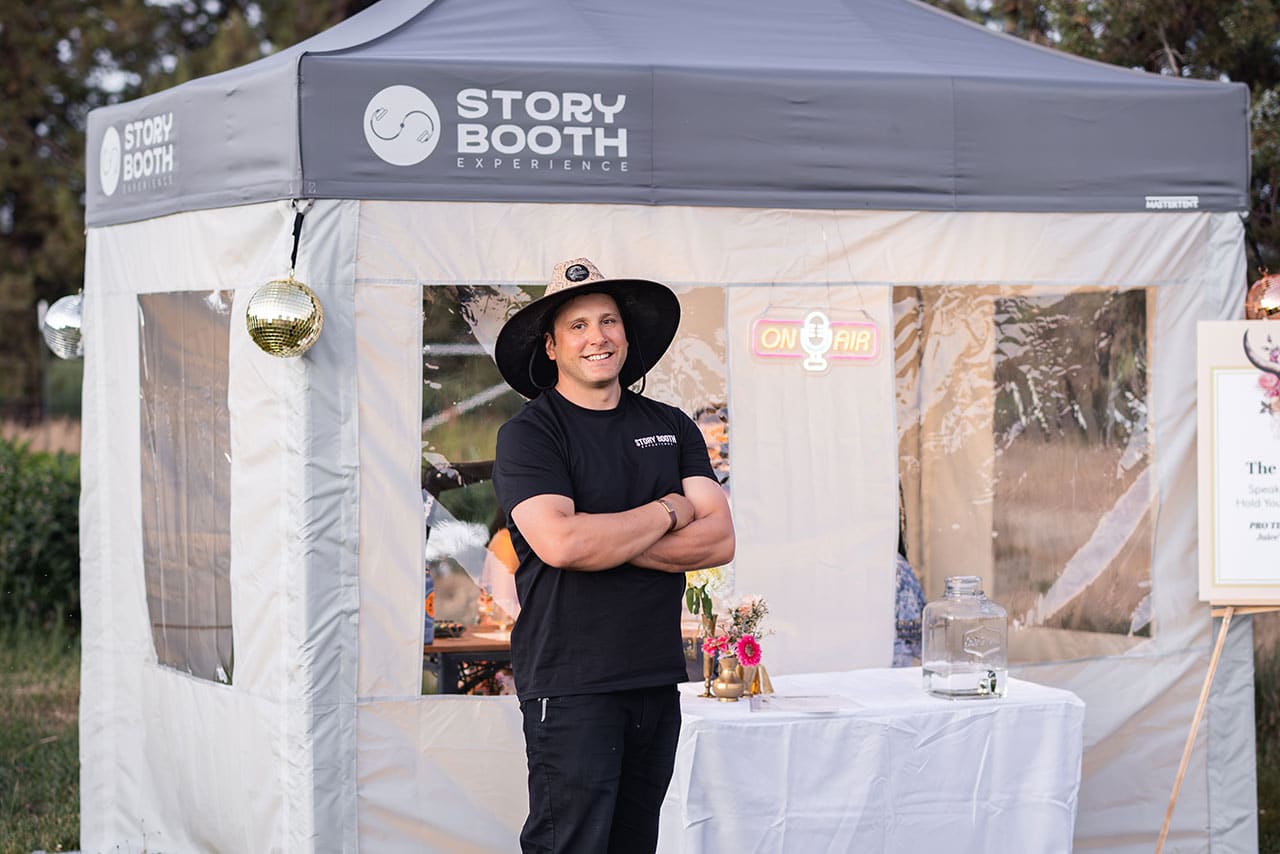Fat, airy snowflakes gently fall on the high desert just east of Bend on a cold, brisk January day. The silent world resembles a pristine Central Oregon snow globe with freshly dusted junipers and sagebrush. The silence is quickly broken, however, as a dozen children rush out into the landscape, filling the air with shouts, laughter and gleeful squeals. School is now in session for the first and second grade students at Bend Forest School (BFS). Read on as we introduce some of the non-traditional alternative schools in Central Oregon.
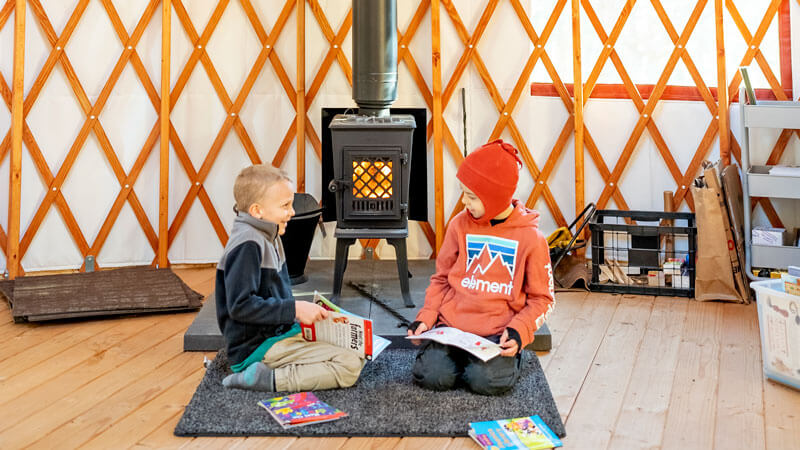
Bend Forest School
Bend Forest School is one of a growing number of non-traditional schools on the rise in Central Oregon, catering to the demands of families looking for a different model of education for their child. According to the BFS website, the inclusive nature-immersion play-based early education program aims to educate and connect children to nature through interest-led, unstructured play outside, creating healthy and confident children who find joy and ownership in their own learning.
Founder and Executive Director Rae Alberg said she has seen outdoor education grow in popularity over the past five years but has seen an even sharper increase since the pandemic. “Bend is filled with people who love the outdoors and know the value that a connection to nature provides,” said Alberg. “In four short years, we’ve seen demand grow exponentially, and this year we’ll be adding third through fifth grades to our program in the fall.”
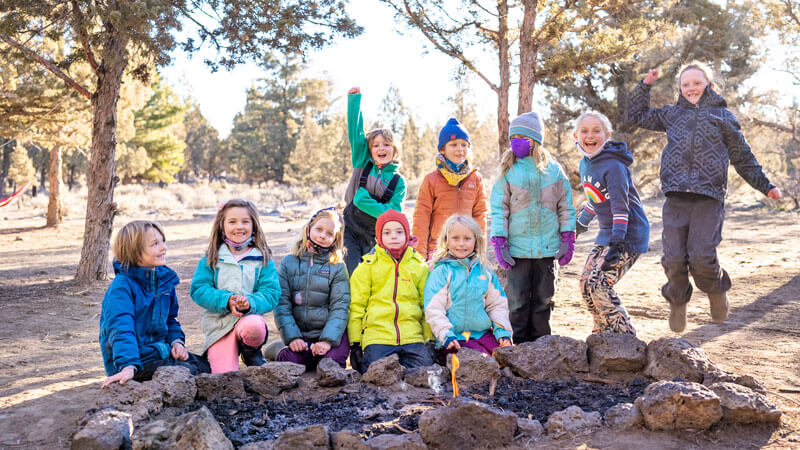
From reducing anxiety and depression to improving cardiovascular fitness, the positive mental and physical health benefits of nature are well documented. Alberg believes this directly applies to education in nature as well. “Being outdoors is not only fun for the child, but it also supports emotional, behavioral and intellectual development,” she said. “Kids really develop a sense of self in addition to the connection to the world around them.”
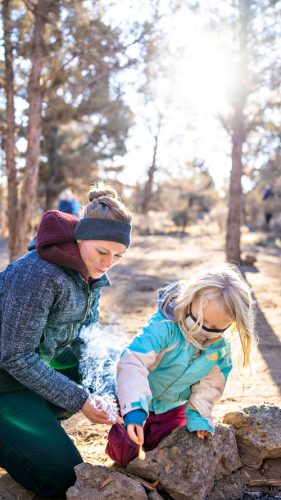
While Alberg acknowledges tuition can be an obstacle for many parents, she said the school recently created a foundation to help. “We provide scholarships for those who fit within the criteria and next fall we’ll be implementing a sliding tuition scale,” she said. “Creating a more equitable program is very important to BFS.”
Rachel and Josh Kelley’s daughter has attended BFS since pre-school and is now in the first grade. The parents say one of the biggest benefits of learning outside is that their daughter has a chance to be a kid for as long as possible. “I didn’t want her to have the stress that can come with being in a traditional classroom for six-plus hours a day at such a young age,” said Rachel. “We have always seen that she is her happiest when she is outside. With the small class sizes and the one-on-one teacher support, she has all the tools she needs to be a confident learner, not be afraid to ask questions or make mistakes, and she’s eager to go to school each day.”
Forging a New Path
Another school integrating nature-based learning as part of its curriculum is Forge, a fourth through twelfth grade private school that aims to better prepare youth to enter the adult world. Co-founders Jackie and Todd LaFrenz created Forge’s curriculum after decades of educational experience, much of it in Central Oregon, and based their new school on three principles: self-discovery, nature and culture.
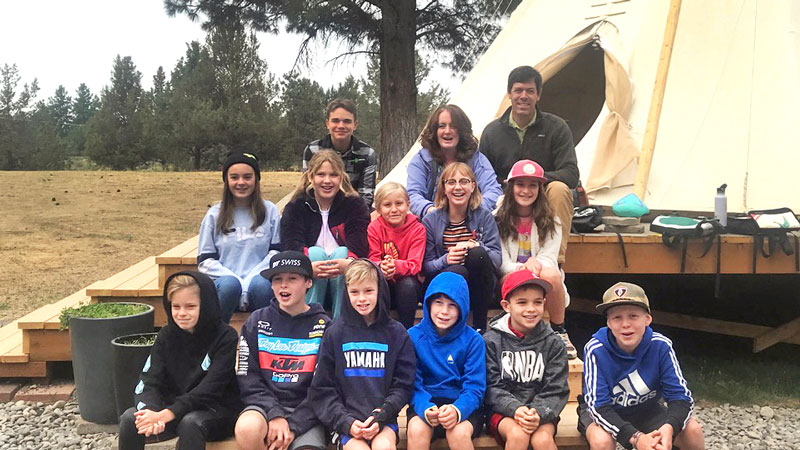
“As teachers, we are most inspired about discovering a child’s passions, gifts and possibilities,” said Jackie LaFrenz. “Even the best schools—and school districts—are still run according to an industrial-age model focused on standards, where there is little time, space or investment in that pursuit. We are creating a model that is all about unlocking a child’s vast potential and guiding him/her to build a more meaningful and impactful life. We want our students to have a strong sense of self, know their place in the world and feel as if they can do or be anything they aspire to.”
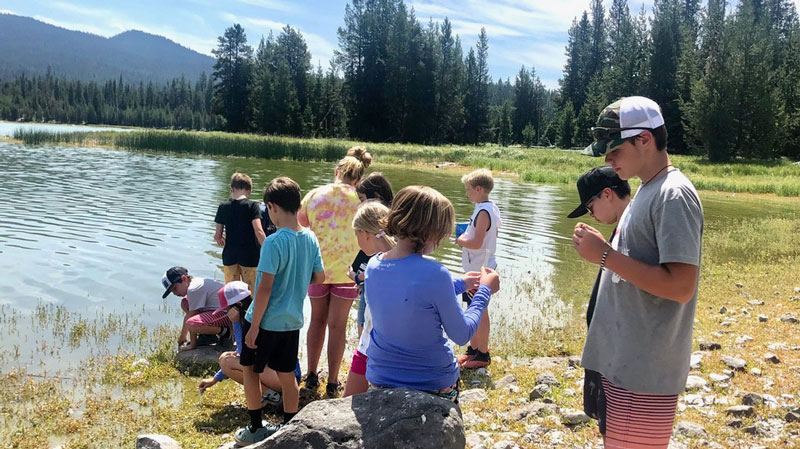
Calling itself “earth centric in a digital world,” Forge offers students an impressive Innovation Lab that would make most R&D departments jealous, with equipment ranging from 3D printers, laser cutters, robotic components and kits to sewing, woodworking and shop tools alongside the traditional computer workstations. According to Todd LaFrenz, Forge hopes to bridge technology and the environment to create better leaders for the future. “It’s not enough to equip our students with the latest in digital tools,” he said. “The leaders of tomorrow will be ambidextrous—as versed in the environmental as they are in the technological. This kind of dynamic balance, where kids are immersed in nature, while learning advanced technologies, yields leaders that can connect dots and cross bridges.”
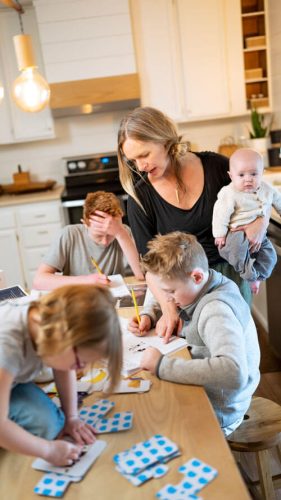
From the Comfort of Home
During the pandemic’s rise in the spring of 2020, education was turned on its head when schools closed their doors and students went virtual with their classes. Once classes returned to in-person in the fall, some families opted to continue at home but via a different pathway—homeschool. Homeschooling can take on several forms and factors, from the idea of “unschooling,” which lets the students choose their own path of learning through an unstructured format, to a more traditional curriculum-based approach simply with more control on what to learn and when.
Lauren and Benjamin Edwards of Redmond have been homeschooling their children on and off for more than a decade. According to Lauren, the initial decision to homeschool was primarily due to bullying and the learning environment for their first son. “His ADHD made it difficult in the classroom so we wanted to try a more individualized approach,” she said. “He acted out in a lot of ways that other kids didn’t understand. We wanted to take him out of those negative situations.”
Edwards said her experiences within the public school system also made her realize the gaps her children were missing. “One of the reasons I love homeschooling is because we’ve been able to take on a more classical approach to learning,” she said. Going broader and deeper on subjects such as personal finance and home economics help the kids to be more self-sufficient and independent, according to Edwards.
According to the High Desert Education Service District (ESD), the number of families registering to homeschool children in Central Oregon shot up over 500 percent during the pandemic to more than a thousand registered home school students in the 2020/2021 school year.
While High Desert ESD Home school Coordinator Jamie Benton says numbers have since dropped for the current school year, they remain well above pre-pandemic levels. Benton also speculates that many of the students who have transitioned back into the public school system may still be at home, taking advantage of the several new at-home virtual learning environments offered by Bend La-Pine Schools.
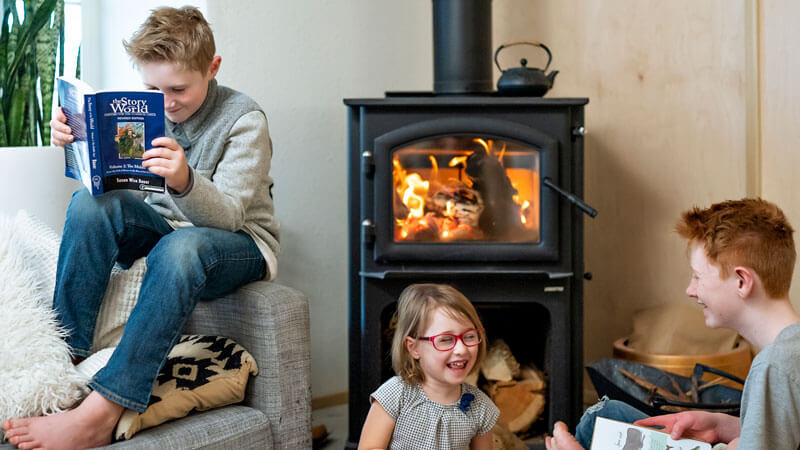
Though reasons vary by household, Benton said one reason for the return to public school could be cost. “Home schooling can be difficult and expensive since parents pay the tuition and provide the curriculum,” she said. From books and materials to online memberships and field trips, costs of homeschooling can quickly add up—not to mention that at least one parent must devote much of their time to schooling their children rather than working for pay. “Going virtual at a public school helps to solve that,” Benton said.
Bend-La Pine Schools offers a range of online learning programs for students and families, from structured and teacher supported to fully independent and family supported. Programs can be tailored for lifestyles and needs, whether a family travels or a child is neurodivergent and needs an environment that a school cannot provide. Online learning programs are offered from kindergarten through the twelfth grade and can be full-time, supplementary or in addition to on-site classroom work. Like all public schools, registration is free and open to all students residing in the district boundaries.
Choice (Options) Among the Traditional
Cost aside, for most families, home schooling or virtual programs may not work regardless due to single-parent households or when both parents work outside the home. Fortunately, there are non-traditional options with the Bend-La Pine Schools at on site locations as well.
Bend-La Pine currently offers six “choice option” schools, or programs with non-traditional learning pedagogies, as well as five schools that are combination choice/neighborhood schools. Parents of high school students have two possibilities amongst the choice option schools with Realms and Bend-Tech Academy at Marshall High School. The latter offers students programs focused on STEM, engineering, construction technologies, business marketing and entrepreneurship and health occupations. Meanwhile, Realms High School was an expansion from the successful middle school magnet program and is an EL Education model based on the same approach and philosophy, which is a focus on challenge, teamwork, service and compassion, and an active inquiry-based learning.
Parents of elementary-aged children have six different options for their family, in addition to traditional neighborhood schools, which students are assigned to based on geographic location within the district. (Note: parents who wish their children to go to another school may submit an Attendance Area Change Request (ACR), which is due by March 1 of each year). Ranging from a focus on collaboration and a sense of community (Amity Creek Magnet at Thompson School) to technology (Juniper Elementary Technology Magnet), dual languages (Spanish Dual Immersion program at Bear Creek and R.E. Jewell Elementaries, and continuing through High Desert Middle School and Caldera High School) and a democratically driven, community learning environment (Westside Village Magnet at Kingston), the range of pedagogies is wide and diverse.
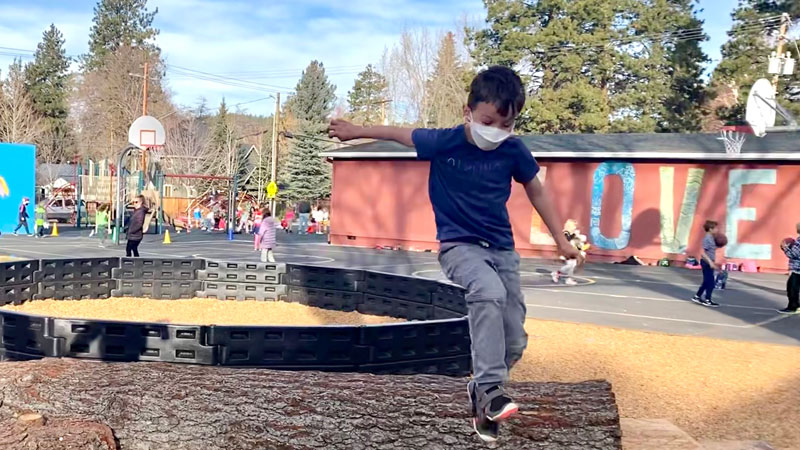
Bend-La Pine Schools Deputy Superintendent Lora Nordquist said the breadth of choices caters to the diversity of learning styles. “Choice options are important to our students because they help provide alternative approaches to learning that may be more effective for some students,” she said.
At Highland Magnet at Kenwood School, students learn through the Scottish Storyline Method, where children create a setting, become characters and overcome obstacles as the story unfolds. Parents Erika and Robert Sommer feel Highland’s unique approach completely immerses their two daughters in learning. “They come home and can articulate facts and concepts that amaze me for their ages,” said Erika. “It’s not about memorizing facts; it’s about putting themselves into a situation.”
Sommer says the “sneaky” approach to the Storyline Method is an advantage in getting kids engaged and invested. She gave the example of one daughter’s experience with a surfing storyline that focused on geography, science and art through an immersive experience. “They don’t pull out their social studies book or science book,” she said. “They are given a ‘plane ticket,’ teachers act as airport personnel and they ‘board’ a plane to Indonesia.”
The Spanish Dual Immersion program is a research-based two-way immersion program model that pairs native English-speaking students with native Spanish-speaking students and follows the same curriculum as the traditional classroom. The difference, however, is that beginning in kindergarten, 80 percent of the classes are taught in Spanish. As students get older, more and more English is taught until fifth grade when it’s half English, half Spanish. According to Bend-La Pine’s website, “bilingual skills are shown to increase critical thinking, creativity and problem-solving.” With a balanced class of both native English and Spanish speakers, children are taught their regular school subjects in both languages, and often outperform their monolingual peers in both languages over time.
Beau Eastes, whose daughter attends the sixth grade at High Desert Middle School and has been in the program since kindergarten at Bear Creek, said their experience has been a very positive one. “Obviously you go in for the fluency in both languages,” he said. “But the biggest benefit is the cultural part of the program.”
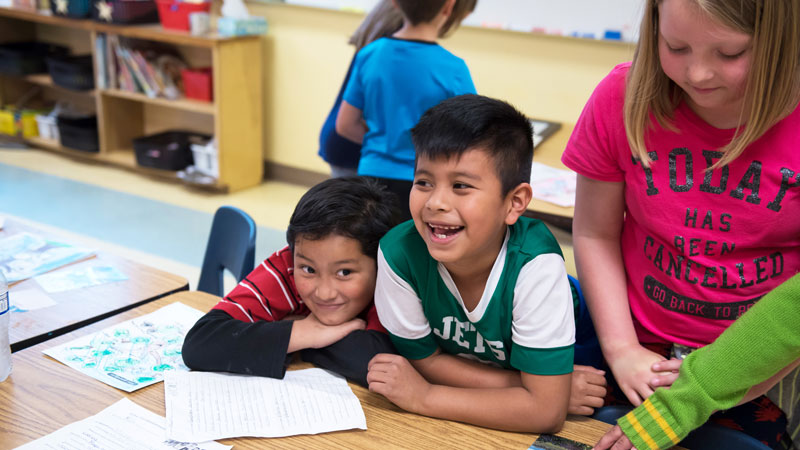
Eastes, whose family is white and native English-speaking, noted that in a town like Bend that is often cited for its lack of diversity, the dual immersion program immerses children in it. “The program really breaks down cultural barriers,” he said. “The norm of the entire education model is diversity. Because of who she goes to school with, because of her friends and teachers, she’s got a better understanding of Latin American culture. For us, bridging that cultural gap is the coolest thing.”
For children who are native Spanish-speakers, the program offers the chance to receive an education in their first language, removing language barriers that can make learning any number of subjects more difficult, while simultaneously improving their English skills.
Jasmin Tebbs, who teaches second grade in the dual immersion program at Bear Creek and who identifies as Hispanic, said, “The beauty of being able to learn in your native tongue validates the home language and creates a sense of self confidence that’s not historically been granted to Spanish-speaking children. Research has shown that Hispanic children who are in a dual language program who are educated in their native tongue perform far better than Hispanic children in traditional classrooms.” Aside from improved classroom performance, the dual immersion program grants Spanish-speaking parents the opportunity to play an active role in their children’s education. “Being able to communicate with your children’s teacher and understand the language of their schoolwork might sound like a basic necessity, but many Hispanic parents have not had that privilege. Dual immersion breaks that barrier and more.”
The Luck of the Draw (and District)
If there’s a drawback to Bend-La Pine’s choice option schools, simply put, it’s that it’s difficult for most families to get in. The programs are popular, which means they are also highly competitive, based on a lottery system, and one must have a bit of luck on their side to pull the winning ticket. Though Bend-La Pine doesn’t publish application numbers, Assistant Director of Communications Alandra Johnson said it depends on the program and school.
For the Sommer children at Highland Elementary, it was the luck of the Scots for their oldest daughter. “As soon as we moved to Bend and were starting to research schools, Highland was always at the top of people’s list,” said Erika. “We nervously entered the lottery as it seemed like we could have easily messed up our submission. I remember receiving the letter via snail mail and opening it and exclaiming ‘Oh my gosh, she got in!’”
——–
Read more of our feature articles found through the following links: Adventure | Community | Culture | Food & Drink


